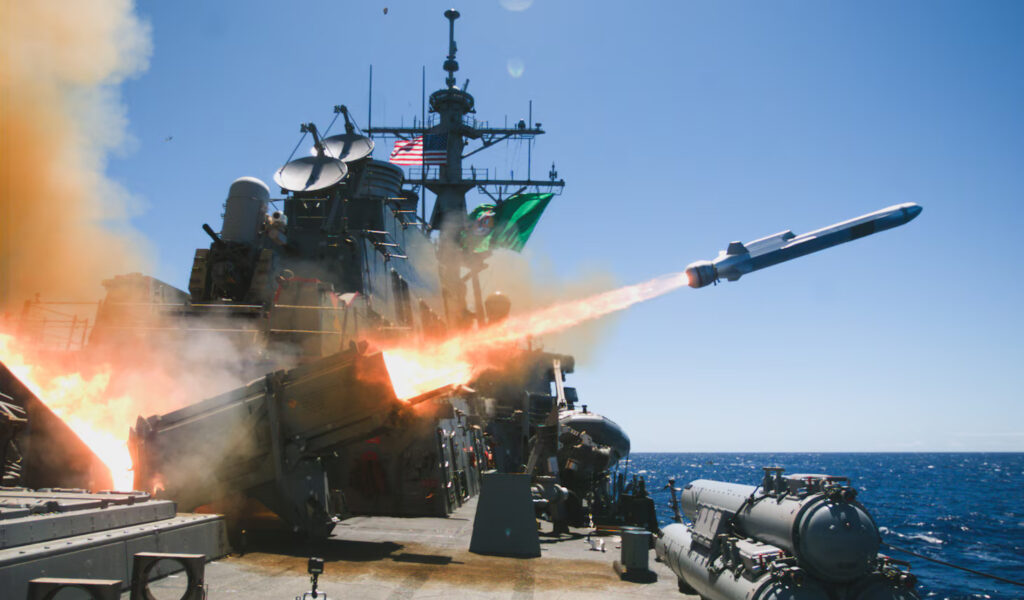The US Navy demonstrated firing a Naval Strike Missile (NSM) from a destroyer for the first time earlier this year.
The Arleigh Burke-class destroyer USS Fitzgerald struck a decommissioned ship with the missile roughly 50 nautical miles (92 kilometers/57 miles) away at the Rim of the Pacific 2024 exercise in Hawaii on July 18.
Its range is over 100 nautical miles (180 kilometers/112 miles).
The Naval Surface Warfare Center, Port Hueneme Division (NSWC PHD) and its partners installed the Over-the-Horizon Weapon System (OTH-WS) on the vessel in a record nine months for the demonstration, swapping out the existing Harpoon anti-ship missile.
According to the US Navy, it normally takes about two years to integrate an OTH-WS onto a warship.
“We knew we were working on an aggressive schedule, but we had all the right personnel on the team to make sure we were successful in executing it,” Eric Romero, customer advocate for OTH-WS with NSWC PHD in Port Hueneme, California, said.
Integration
An OTH-WS consists of an operator interface console, NSM, and the missile launching system. The integration also included a navigation adapter to make it compatible with the destroyer.
USS Fitzgerald features two missile launchers, with each capable of holding up four missiles at a time.
Nearly 20 organizations were involved in the effort, including five program offices, four warfare centers, and a dozen external entities.
“We were expecting a great deal of roadblocks due to the compressed timeline, but everyone came together to accomplish this monumental event,” platform integration lead with NSWC PHD in San Diego Todd Jenkins said.
Naval Strike Missile
Developed by Kongsberg and Raytheon, the NSM features a stealthy design, including GPS-assisted inertial navigation system guidance and a passive imaging infrared seeker, which makes it immune to radio frequency electronic warfare jamming.
Comparatively, the Harpoon features an active infrared seeker, making it susceptible to jamming.
The NSM is made of composite materials that enhance its stealth features. Additionally, it flies in sea-skimming mode to avoid radar detection.
The missile has been integrated into about a dozen Independence-class littoral combat ships of the US Navy over the past five years.
It is also part of the armament package of the future Constellation-class frigates.



